Hello and welcome to another episode of Truth OR Myth Beta Canon, a Star Trek web series that dives into the history of any given topic using Beta Canon sources and my own imagination to fill in the gaps. In today’s episode, we’re looking at the Hawking Class of Starfleet Starships, a fan-designed starship by Mark Kingsnorth, to better understand its place in Star Trek History.
This video is a very special one for me, as not only do I get to create an entire back story for this class, but I also reskinned the starship myself since graphically speaking, the model from 2010, was simply no longer up to par for videos of today…
And as always, Because this IS a bit of my own Fan Fiction, all information relaid should pretty much be taken with a grain of stardust, and only considered a little bit of Star Trek Fun! And so, with all that out of the way, let us begin.
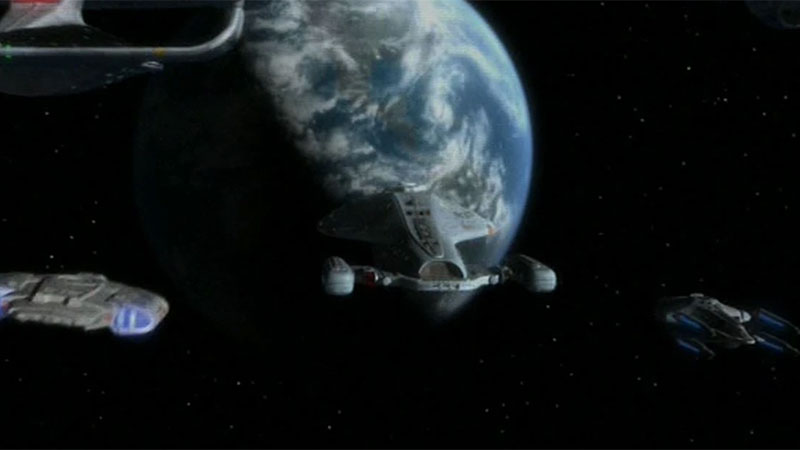
With the 25th Century right around the corner, Starfleet Command and the United Federation of Planets began to look to the future of their respective organizations. And as a direct result of Starfleet’s forward-thinking, the Hawking Class would come to exist. But what do we know about this experimental and monumental class? Well today, we’ll find out…
USS Voyager’s triumphant return to the Alpha Quadrant in 2378 captured the hearts and minds of Federation citizens everywhere. And even while celebrations were underway for Captain Janeway and her crew, Starfleet Command began eyeing several assets that Voyager had brought back with her.
This ship and crew had functioned well, under circumstances that no one at Starfleet could have foreseen. And to get her crew home as fast as possible, Captain Janeway authorized several propulsion projects, which all, ultimately failed.
Though some would in fact get Voyager closer to its Alpha Quadrant goal, most had unknown side effects which would prevent continual use. And the Voyager crew, stranded in the Delta Quadrant, simply did not have the resources to solve the problems with those technologies, to make them a viable means of propulsion, but Starfleet did.
Since the early 23rd Century, Starfleet had been working on breaking the Transwarp Barrier, commissioning several projects in an attempt to do just that. But all these projects, though expanding Starfleet Knowledge of Warp Propulsion, all failed.

However, the USS Voyager was able to break the Transwarp barrier on more than 1 occasion, even if for a limited time, and this ignited the imaginations of Starfleet’s best and brightest… One engine system, in particular, caught the attention of Starfleet Commands leading propulsion expert, Dr Leah Brahams.
Brahams had an extensive career with Starfleet, designing many of the Warp and related Systems employed by the organization in the latter half of the 24th century. And when she came across the detailed scans and information on a propulsion system known as the Quantum slipstream drive, she immediately went to Commander Starfleet herself and requested permission to begin a full project into the technology.
It was a long and gruelling process, as Brahams and her team had to build this new technology from the ground up. But after 12 years of hard work in late 2390, Brahams believed they had come up with the first Federation Created, Slipstream Drive… Starfleet Command was eager to put this new Propulsion System to the test, but with this new technology came a new problem.
Voyager itself had been able to enter and maintain Slipstream itself for a short time before the slipstream field collapsed. Diagnostics run after the incident by Voyager’s Crew discovered an unknown form of Subspace radiation within the Slipstream which over time would destabilize Voyager’s Hull at the Molecular Level. And as a result, Voyager was unable to use the technology again.
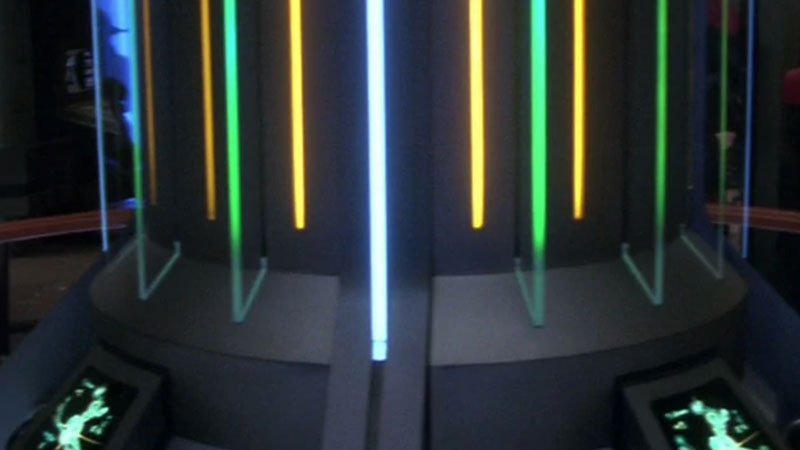
Also, the Dilithium Crystals which allowed the entire core to function, known as Benamite Crystals, were highly unstable and very difficult to synthesize. But unlike Voyager’s Crew, Starfleet Commands best and brightest had been able to stabilize and synthesize this form of Dilithium, although it was a long gruelling process.
And by the time of this classes launch, Starfleet’s Scientists had even adapted the Recrystallization process currently employed in Warp Drive starships, to allow for Recrystallization of the Benamite Crystals themselves. Though, unlike standard Dilithium Crystals, Benamite Crystals could not be recrystallized as many times…
Also, Voyager’s shape was another issue.
Flying through slipstream was more akin to a submarine travelling through water rather than a starship travelling through space. And although Voyager was aerodynamic for her time, a more streamlined design would benefit the new drive greatly, and so now, Starfleet Command turned the problem over to its design engineering, ordering them to create a starship design that could handle the Subspace Radiation, while at the same time be a more streamlined design.
And thus the Hawking Class Born…
Sitting at a length of approximately 428 meters, and 11 decks tall, the Hawking Class would be designed to be crewed by 98 Officer and Crew Members.
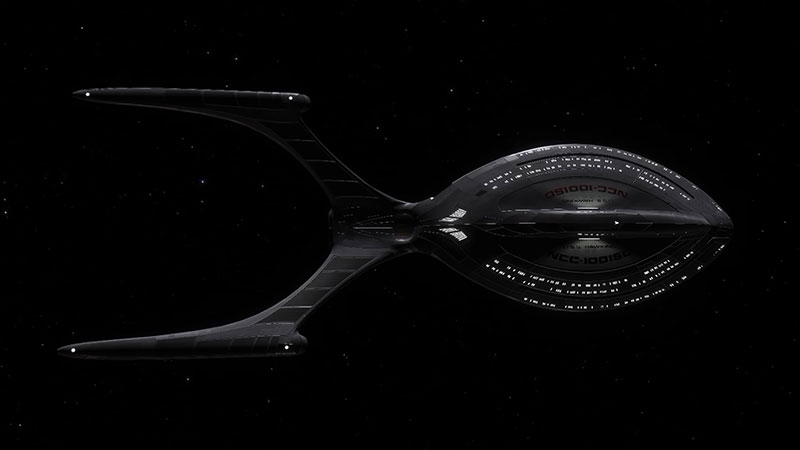
She would contain all the latest experimental advancements in Starfleet technology. 2 Computer Cores would run the Starship.
The Primary Core was an enhanced Bio-Neural Circuitry core, while the backup core, was a more traditional Isolinear Model, though it itself had been enhanced… This again was done thanks to Voyager’s Delta Quadrant experience.
Being stranded in the Delta Quadrant meant that Voyager didn’t have many spare parts. And Bio-Neural Circuity packets couldn’t simply be replicated like its Isolinear older counterpart. And so, in case of a long-range mission, where the entire Bio-Neural System failed or was offline due to disease or other unforeseen events, the traditional core could take over functions of the Starship and allow it to travel to safety.
The Hawking Class would be equipped with 8 Phaser Arrays and 3 Torpedo Launchers, 2 forward and 1 aft. Defensive Shielding for this class would be that of Multi-spectral Regenerative Shielding again based on Voyager’s technological upgrades.
This vessel class would also have the distinct honour of being the first Federation Starship to have dual propulsive cores, the first was a standard warp core which had a safe cruising speed of Warp Factor 8, and an emergency speed of warp factor 9.99, and the slipstream core was housed next to the warp core and fed power through the same systems that fed its big sister.
The hull of this vessel class was also quite different from any other vessel class of the fleet. Starfleet’s Engineers had closely studied the Hull Armor Technology brought home by Voyager as well. And found the material used to create the armour to be a form of Tritanium, Victrium and Cordranite combined at the quantum level.
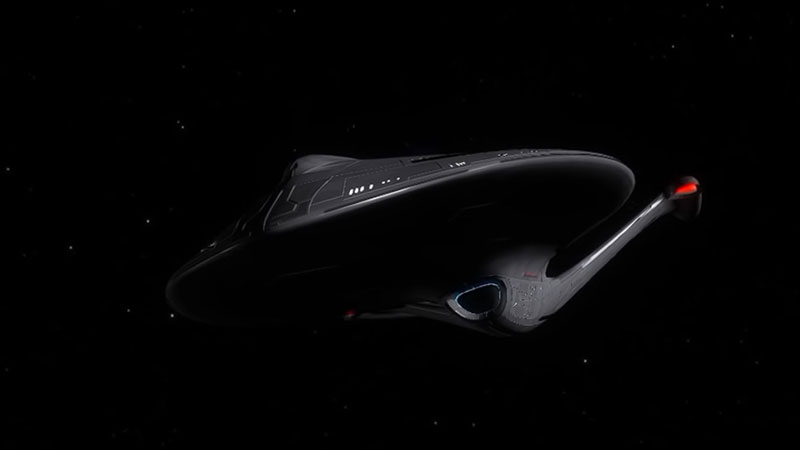
This made a far stronger Hull Material than almost anything Starfleet had seen before. And so after successfully reproducing the material, the decision was made to construct the Hawking Class of this new plating, as Starfleet’s Engineers believed it would not only make the ship much more resistant to standard weaponry of the time, but it would also be immune to the Subspace Radiation found within the Slipstream.
The Hawking Class would also take full advantage of the new Emergency Crew Holographic system currently employed on the Odyssey Class.
This system allowed for the computer to replace crew members with holographic officers should 1 or more of the crew be either hurt to the point where they could not man their post or be killed in some type of emergency. When the computer detected one of these events, it would automatically engage the replacement hologram to assume the officer’s duties until another crew member could be found to take the position.
After many delays, developments and redevelopments in technology, the USS Hawking would finally complete construction in late 2399 and would be launched secretly from its classified base of construction for its shakedown cruise.
Testing on its more conventional systems went well. The new computer cores, Offensive and Defensive Systems along with the classes warp drive all performed as or above expectations, but everyone was waiting for the testing to begin on the New Slipstream Drive, Dr Brahams herself on board to make any adjustments necessary on her new drive system.
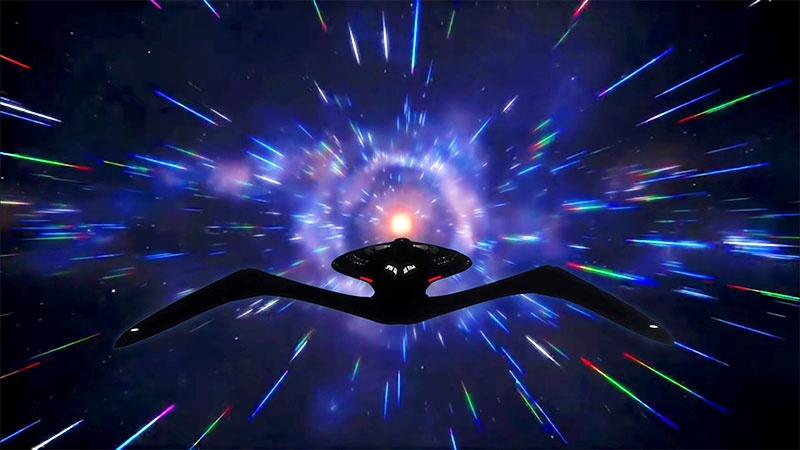
Initiating the deflector matrix to pierce the Quantum barrier, everyone onboard the USS Hawking held their breath, the moment of truth was upon them, and after a few seconds, what seemed like an eternity to Brahams, the USS Hawking entered Slipstream.
Making a few settling in adjustments to the new drive, Starfleet, the Hawking’s Crew and Dr Brahams all rejoiced at the first successful test of the Quantum Slipstream Drive.
Little did the Galaxy know the effect that this new technology would have on the Federation, allowing it to grow and expand its areas of exploration, with the ability to respond to any potential dangers far quicker than anyone could have dreamed of.
Many classes would be spawned directly from this technology, Including the Universe Class itself, the pinnacle of Starship Designs of its time, and the Federation would extend its hand in friendship to all the species Starfleet encountered in its travels, eventually leading the Federation to be the largest power in the Galaxy.
As for the Hawking Class itself, only a dozen of these ships would be constructed, primarily to test the new Quantum Slipstream Technology, for larger, specially designed exploration classes. Nevertheless, the 12 vessels of the Hawking Class would all perform with distinction and honour in the grandest tradition of Starfleet Starships, Earning the Hawking Class its place, in Star Trek history…
What to help this channel reach Quantum Slipstream Velocity? Then just click HERE to become a channel Patron…
Watch The Latest Truth Or Myth Below
Thank you for watching today’s episode of Truth or Myth Beta Canon, what do you think of the Hawking Class, and the historical narrative I’ve created here. Would you like to see more videos about the missions of ships of this class? Well leave your comments in the section below and don’t forget to like the video and subscribe to the channel.
Thanks again for watching, Live long and prosper…












